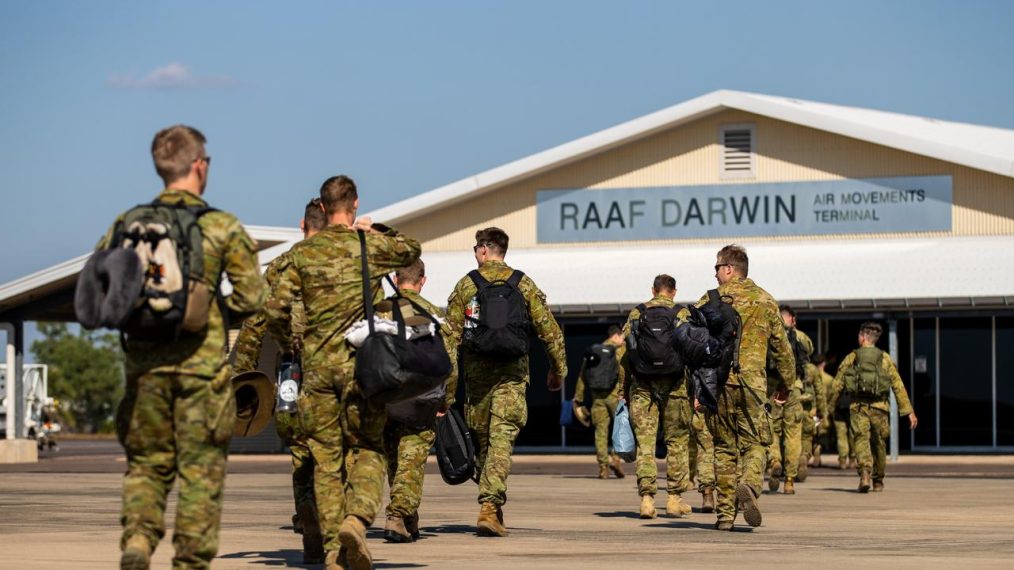
Addressing the Disconnect Between Policy and Action in the Northern Territory
The focus on Northern Australia in Australia’s defence strategy is clear. The Defence Strategic Review, National Defence Strategy, and Integrated Investment Plan emphasize the importance of deterring threats approaching from the north. These strategic documents outline the need for a well-connected, resilient network of military bases in Northern Australia to enhance the Australian Defence Force’s (ADF) operational readiness. Yet, on the ground, infrastructure challenges, declining troop numbers, and logistical constraints suggest a significant gap between these policies and practical implementation.
Recent investments by Australia and the United States in the Royal Australian Air Force’s Tindal base near Katherine underscore the region’s strategic importance, particularly in the Indo-Pacific. Upgrades have focused on enhancing Tindal’s capabilities, from airfield operations to logistics support, and the U.S. has also increased its deployments of aircraft and personnel. However, it remains unclear if the Northern Territory’s infrastructure—particularly transport and logistics networks—can support the high operational demands required by evolving security challenges.
Key logistical concerns persist. There are doubts about the availability of fuel trucks to supply Tindal from Darwin under high operational pressures, and without a dedicated rail link, transporting munitions and other critical supplies from Adelaide to Tindal is problematic. These issues cast uncertainty over the region’s readiness for rapid and sustained defence responses, highlighting a need for an infrastructure overhaul to support strategic objectives.
Training capacity in the Northern Territory has seen some improvements, with the ADF expanding training areas to better simulate diverse, real-world scenarios. But even as these facilities grow, the number of stationed ADF personnel has been reduced. The Darwin-based 1st Brigade, once the Army’s most formidable unit, has been downgraded from a mechanized force, losing its tanks and armoured vehicles in 2019 due to restructuring. By the end of 2024, all Darwin-based helicopters will be relocated to Townsville, consolidating air support away from the Northern Territory.
This restructuring continued in September 2023, with the 1st Brigade’s transformation into a light combat brigade focused on swift, littoral operations. Meanwhile, the 3rd Brigade in Townsville is now designated as an armoured brigade, set to operate in coordination with the Royal Australian Navy for amphibious missions. While most new amphibious vessels will be based in Townsville, the 1st Brigade’s vessels remain in Darwin’s overcrowded HMAS Coonawarra. The long-range fire units, essential to deterring adversaries in the north, will be stationed in Adelaide, where logistical challenges include rail and road vulnerabilities and limited airlift capacity for rapid deployment.
The Royal Australian Navy’s presence in Darwin includes Armidale-class patrol boats and the upcoming Arafura-class patrol ships. Although versatile, the Arafura-class vessels face limited support infrastructure in Darwin’s port, forcing them to journey significant distances for maintenance or re-arming, creating potential response delays during active operations.
This disjunction between policy and action in the Northern Territory is stark. The U.S. has bolstered its capabilities there, while Australia’s investments remain limited to base and training expansions. This lack of broader infrastructure and logistical planning leaves critical gaps in Northern Australia’s overall defensive readiness. A senior Australian official even acknowledged earlier this year that the Northern Territory lacks the support capacity for U.S. prepositioned equipment, citing limited space and inadequate industry resources.
It’s clear that cultural resistance within Defence to establishing a larger presence in the Northern Territory has delayed essential reforms. Moving forward, a nationally coordinated, simulated stress test of Defence and civilian capacity in the Northern Territory could reveal vulnerabilities. Such an exercise should incorporate real-time data from industry, state, and territorial sources, evaluating logistics, infrastructure, and force posture under simulated operational stress.
The findings from these stress tests would offer a clearer picture of what Northern Australia truly needs to meet policy goals. Closing the gap between vision and reality is essential, not only to meet today’s strategic demands but to safeguard Australia’s northern front for the future.



